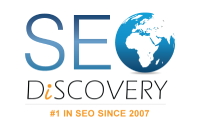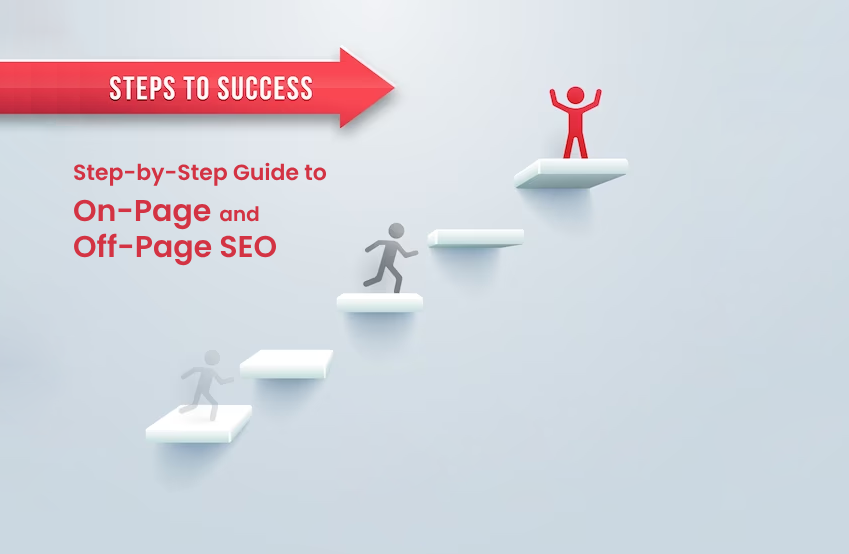SEO is not a new thing! It has been in the market for more than two decades.
If you are from a Digital Marketing background, you may have a good understanding of SEO, which is known as Search Engine Optimization if broadly termed.
In simple terms, SEO is all about making your website improve its online visibility, building site authority and credibility, and spreading brand awareness, which helps boost your organic traffic and revenue.
But with time, Google has changed its policies regarding SEO which makes it more complex to rank.
SEO practices utilize on-page, off-page, and technical SEO techniques to ensure your website shows up at the top of search results.
Below, we have given you a complete overview of on-page and off-page SEO techniques and mentioned a short description of technical SEO as well.
As achieving better SEO results is a time-consuming process and needs great knowledge to implement, you can hire an SEO company if you feel any complications doing it yourself.
SEO companies offer all services, whether it is on-page, off-page, or technical optimization for your website. Collaborate with companies that have genuine user reviews and can really give you better results.
When it comes to the types of SEO, it is broadly categorized into three parts. These are On-page, Off-page, and Technical SEO optimization.
What is On-page SEO and its Techniques
On-page search engine optimization is all the stuff you can do on your website to make sure your pages show up on search engine results pages (SERPs).
It also helps you figure out how well your web pages rank. So how does it work? Basically, it uses content and other technical elements to make your pages look better to both users and search engines.
The more pages you optimize, the higher it will come up on search results. As a result, more people will visit your site.
Below we have discussed the on-page optimization techniques:
1. Keywords Research
It is also not an uncommon term. You may have heard it many times before.
If you want to do on-page SEO for your website on an advanced level, the first thing you need to do is conduct thorough keyword research.
With the help of SEO tools, like Ahrefs, Google Keyword Planner, Semrush, or others, you can find out within a moment what keywords and phrases your audience is likely to be searching for.
These tools will give you a detailed idea of how many people are searching for a specific keyword, and what keywords your competitors are using on their site’s content.
Once you are done researching the high-volume keywords from your niche with lower keyword difficulty, all you have to do is implement them on your website, including the title, heading, URL, alt text for images, meta descriptions, and wherever applicable.
2. Original Content Creation
Content has no alternative when it comes to search engine optimization.
Creating high-quality, engaging, and useful content is essential in helping search engines to rank your website and for retaining traffic.
Further, start writing longer, in-depth articles that thoroughly cover the topic to establish authority and increase the likelihood of ranking higher.
Include the highly performable keywords that you have listed from your keyword research in your content while maintaining readability. All these together can increase search engine rankings and let you obtain more organic traffic.
3. Title Tags and Meta Descriptions Optimization
Make sure your title tag and meta description are as descriptive as possible but within the prescribed character limit to get people to click on your content.
Keep your title tag to 60 characters and your meta description to 160 characters maximum. If you write more than this limit, your title and meta description may not show up fully on Google.
Don’t forget to include your target keyword to make it more relevant and increase your click-through rate.
4. Heading Tags and Content Structure
If you want to make sure your content is easy to read for both people and search engines, you can use heading tags like “H1”, “H2,” or “H3” to organize your content in a way that makes it easier to find what your users are looking for.
You can also include target keywords in the headings. But try to keep your content flowing naturally. If including keywords in the heading is making the main content look bad, leave it. Don’t include the keywords unnecessarily.
5. Image Optimization
While images can help make your content more eye-catching, they can also slow down how quickly pages load if they’re not optimized.
To make things easier, compress images so they don’t take up as much space as they should, and use descriptions for the file names and the alt text to give search engines more context.
6. Internal Linking
Suppose, you have already written a blog on “the complete guide on off-page SEO techniques“. Now, you are writing a blog on “How to do SEO?”.
Instead of explaining the whole off-page optimization techniques in detail for your second blog, you can interlink these two blogs.
Put up a hyperlink covering the “off-page SEO techniques” wording in your “How to do SEO?” blog. This way, you don’t have to explain all the off-page SEO techniques repeatedly in detail.
All in all, internal linking helps spread authority around your site, makes it easier to navigate, and gets people to dig deeper into your content.
Make sure your anchor text (Like this word – off-page SEO techniques. It helps understand your users and search engines what your hyperlink is about.) is both relevant and descriptive.
What is Off-page SEO and its Techniques?
Off-page SEO is all the stuff you do outside your website to help your site rank higher in search engines and get more traffic engagement.
It includes things like building quality backlinks from other authoritative websites, using social media to spread your brand awareness and building your online reputation by getting brand mentions by working with influencers.
Basically, off-page SEO tells search engines that your site is reliable, authoritative, and important, which helps your website rank higher and get more organic traffic.
1. Building Backlinks
The primary goal of Off-Page SEO is to acquire high-quality links from authoritative websites to your site. These links effectively convey to search engines the value and credibility of your content.
Remember, when creating links, do not engage with spammy sites which may decrease your site authority. Always engage with those sites that have great authority and are relevant to your niche.
Another thing that you have to consider is how many different domains or referring domains are pointing to your site.
If most of your backlinks are from the same domain, you will not earn much authority in that niche compared to when you have backlinks from different domains with higher authority and relevance.
2. Content Marketing
Content marketing is a powerful tool for getting backlinks, which are the foundation of any successful off-page SEO services.
When your content is well-written, interesting, and up-to-date, it’s easy to get other people’s attention. This attention often turns into organic backlinks because other people see the value you add to their own narratives.
The key is to make your content really engaging and problem-solving. By focusing on the issues your target audience is facing and coming up with creative solutions, such as creating visual assets like infographics and interactive content, blog posts, etc., you become a reliable source that other people are happy to link to.
Collaborate with bloggers, industry leaders, and webmasters to earn backlinks. At the same time, guest posting and influencer marketing can also give a chance to acquire backlinks.
Proactive outreach and networking are also really important. When you post your content in the right places, like communities, forums, and social media, you make it more visible and get people in your field to check it out. This usually leads to more backlinks as people share and link to it in their own posts.
Although social media comes under content marketing tactics, we have explained it separately for better understanding.
Social Media Engagement & Links –
In today’s ever-changing digital world, social media can be a great way to share your content with a wider audience. Even though it isn’t a direct Google ranking factor, your brand can still benefit from this off-page optimization process.
When you’re actively engaging with users, meaning you respond to comments, engage in conversations, build a network around your brand, and create interesting and useful articles, blogs, or even short content that may help your audience, it turns your followers into passionate supporters.
This way, you will be able to attract your audience to share your content on their platform or can even get brand mentions, leading to earning backlinks.
Even in the worst possible scenario, if you don’t get any links from your visitors, you will get more attention which leads to more brand awareness and mentions.
3. Local SEO & Citation Sites
When it comes to boosting off-page SEO, local SEO and citation sites are key. Local SEO is all about making sure your website is visible for local searches, so it’s essential for businesses that want to reach local people.
Citation sites, also known as business directories, are like online directories where you can list your contact info, services, and the place you’re located. These listings are really important for off-page SEO because they help make your website more authoritative, trustworthy, and relevant in search engines’ eyes.
Citation sites give you the chance to create consistent, accurate mentions of your business all over the web, like NAP (Name, Address, Phone Number) and sometimes even extra info like your working hours or customer reviews. Google Business Profile (GBP) is the most useful and free listing site. Besides that, you can use other ones based on your niche.
This helps build trust and legitimacy with search engines, which is great for local searches. The more high-quality, relevant citations you get, the more likely you are to rank high in local search results and drive more organic traffic to your website.
Basic Difference Between On-Page, Off-Page, and Technical SEO
On-page SEO refers to the on-site optimization like keyword implementation on your primary content and on the technical parts as well, like heading tags, meta tags, alt text on images, etc.
Off-page SEO refers to the optimization of your website from the outside, like backlinks building, content marketing, social media integration, local SEO, user-generated reviews, etc.
Technical SEO refers to the optimization of your website’s technical things, like page load speed, mobile usability, site map, HTTPS and security, schema markup, etc.
Conclusion
On-page and off-page SEO is a long-term process that needs continuous development and improvement.
Following this step-by-step guide will enable you to improve the visibility of your website, draw in organic visitors, and ultimately reach your SEO objectives.
SEO is a constantly evolving field, so it is important to remain up-to-date with the most recent trends and algorithm updates in order to maintain your online success.



Add a Comment